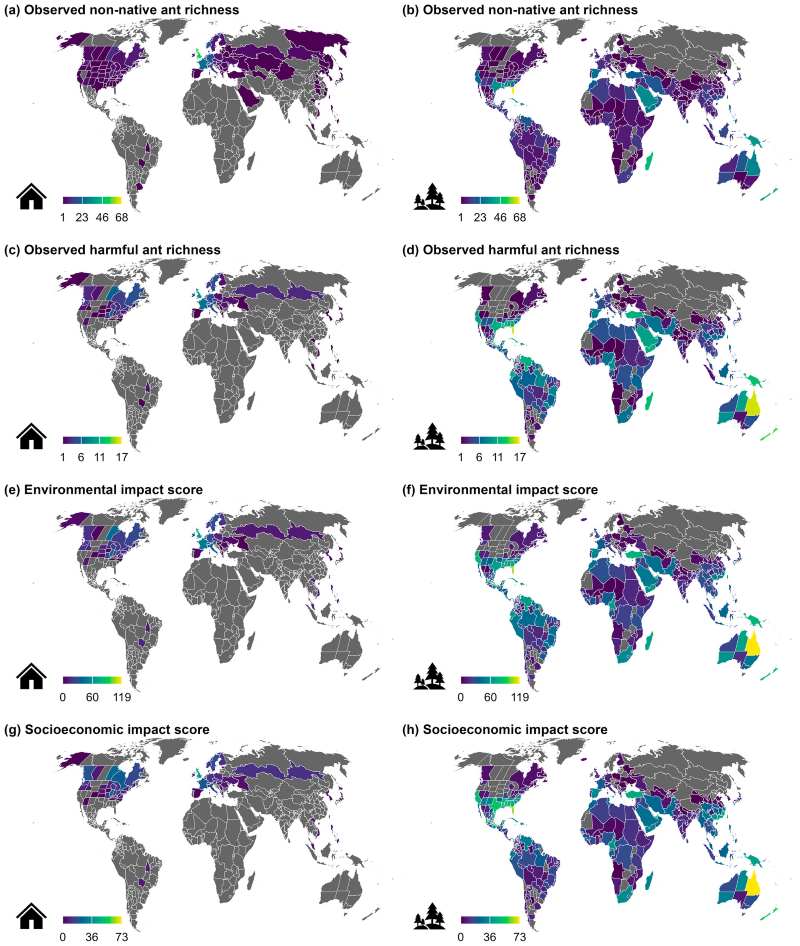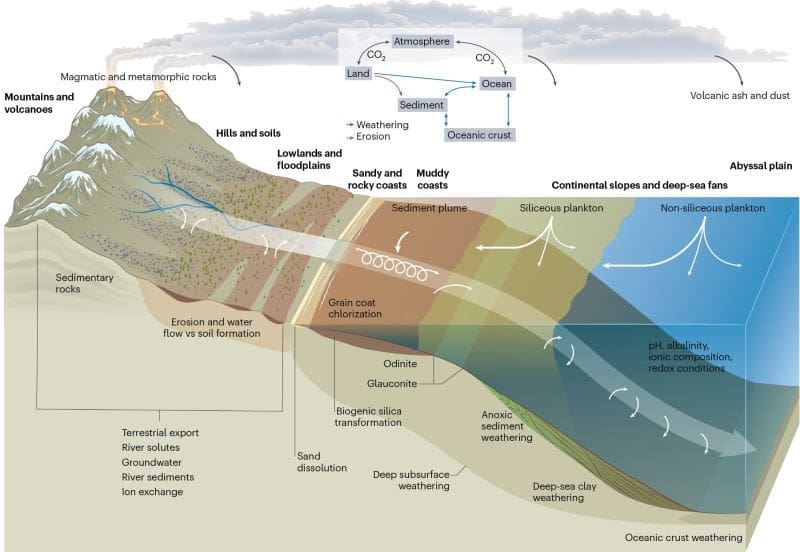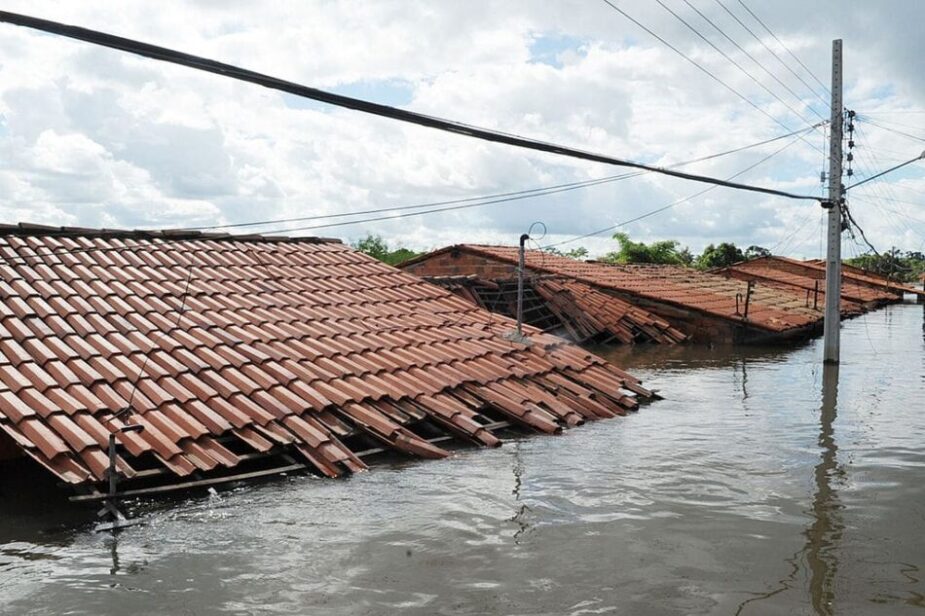Explore the latest insights from top science journals in the Muser Press daily roundup (August 10, 2025), featuring impactful research on climate change challenges.
In brief:
Indoor ant populations might start invading outdoors due to global warming
Some ant species that can only survive indoors in cooler regions could begin to move outdoors due to climate change, according to a new U of T Scarborough study.
The study, published in the journal Diversity and Distributions, is among the first to show how global warming may increase the risk of invasive species by enabling indoor-dwelling insects to expand into outdoor environments.
Researchers warn that some of these indoor-only ant species have the potential to cause significant damage if they become established outdoors.
“We tend to think of non-native species invading outdoor environments only,” says Toby Tsang, a postdoc in the Department of Biological Sciences at U of T Scarborough and lead author of the study. “But indoor environments – like homes, buildings and greenhouses – can act as safe havens for non-native ants, especially in colder regions where they wouldn’t normally be able to survive outside.”

Tsang analyzed global data on 323 non-native ant species across 477 distinct geographical regions to look at how climate conditions affect whether ants remain indoors or can spread outdoors. His model found that with 2°C to 4°C of global warming, ants currently confined to indoor environments are more likely to establish themselves outside – particularly in the colder parts of the Northern Hemisphere.
He says indoor environments can act as a “stepping stone” for ant invasions, giving them a warm, safe place to live until outdoor conditions become more favourable. Tsang says the majority are introduced indoors unintentionally, hiding in shipping crates, plant pots, soil, and just about any crack or crevice, then are accidentally transported between regions alongside consumer goods.
Once the ants arrive inside a building or greenhouse, they can be hard to detect due to their small size and can easily survive indoors in colder regions. Indoor environments also have fewer ant predators and can provide more sources of food, further improving their chances at survival.
“Many ants have a broad diet, so food isn’t a problem. Indoor environments also lack large predators of ants. Once a nest is established, indoor environments provide a safe place where ants can thrive,” says Tsang.
There are already documented cases of non-native ants escaping from indoor environments. In Ontario, where there are currently five species of non-native ants that can only be found living indoors, one of them has the potential to cause significant damage if it spreads outdoors.
Wasmannia auropunctata, commonly known as the electric ant or little fire ant, is a small golden brown ant native to Central and South America that derives its name from a painful sting relative to its size. It has spread outdoors in five continents, including North America, and are living inside greenhouses in various parts of Canada.
This bug is listed as one of the world’s top 100 worst invasive species by the International Union for Conservation of Nature, due to its ability to outcompete native ant species and prey on other insects and even small animals. It’s also an agricultural pest, known to attack farm workers and animals – its sting can cause blindness in severe cases. The ants also contribute to crop damage by protecting pests such as aphids from predators in exchange for honeydew, an important food source for the ants.
Despite the risk ants like Wasmannia auropunctata pose, Tsang says invasion monitoring programs tend to overlook indoor populations of non-native species.
“Some of the ants that are most likely to spread can be very harmful, such as the Argentine ant and Wasmannia,” says Tsang, whose research focuses on how climate change might contribute to ant invasions.
“These species can outcompete and prey on native species, cause ecological and agricultural damage, and even pose health risks to humans. We need to pay better attention to them.”
Journal Reference:
Tsang, T. P. N., M. K. L. Wong, M. W. Cadotte, E. P. Economo, and B. Guénard, ‘Climate Change Can Exacerbate Ant Invasion Impacts by Unleashing Indoor Populations Into Outdoor Environments’, Diversity and Distributions 31, 7: e70041 (2025). DOI: 10.1111/ddi.70041
Article Source:
Press Release/Material by University of Toronto
A smarter membrane for cleaner water
As climate change and population growth place mounting pressure on global water resources, communities around the world are seeking sustainable ways to reclaim water from nontraditional sources such as stormwater, agricultural runoff and municipal wastewater.

A team of researchers led by Menachem Elimelech and his former postdoctoral researcher Yanghua Duan at Rice University has taken a major step toward solving one of water purification’s biggest puzzles: how to best design catalytic membranes that simultaneously filter and transform contaminants in a single step.
“Our work addresses a long-standing limitation in the field,” said Elimelech, the Nancy and Clint Carlson Professor of Civil and Environmental Engineering. “Until now, most progress in reactive nanofiltration membranes has been empirical. We’ve lacked a solid framework to understand and optimize how these membranes actually work.”
Reactive nanofiltration membranes offer a powerful promise: the ability to remove salts, heavy metals and small stubborn organic pollutants all at once. But behind that promise has been a challenge — performance that’s hard to predict and scale due to the complex interplay between chemical reactions and mass transport.
To tackle that complexity, Elimelech and Duan developed the first mechanistic model that simulates how oxidants and pollutants move through and react inside catalytic membranes under realistic operating conditions.
“We hypothesized that membrane performance is fundamentally governed by the interplay between reaction kinetics and solute transport,” said Duan, who is now an assistant professor of civil and environmental engineering at Colorado State University. “By capturing these interactions in a model, we can move beyond trial-and-error design.”
Their framework, recently published in Nature Water, simulates how variables like catalyst placement, membrane thickness, pore size and water flow affect the removal of contaminants.
“We discovered that the same membrane can behave completely differently depending on where the catalysts are located,” Duan said. “At low water flux, surface-loaded catalysts dominate, but at higher flux, the action shifts inside the membrane. That has big implications for how we design systems for different water treatment needs.”
One major discovery was identifying the ideal range for catalyst loading. Too little catalyst limits the reaction rate, while too much creates a transport bottleneck.
“We showed that more isn’t always better,” Elimelech said. “There’s an optimal catalyst distribution, and we now know how to find it.”
Elimelech and Duan also introduced new performance metrics that go beyond conventional removal rates — tools that can help engineers better compare and refine membrane systems across the board.
“We’re shifting the field from reactive experimentation to predictive design,” Duan said. “That opens the door to membranes that are not only more effective but also more scalable, energy-efficient and adaptable to different water qualities.”
Importantly, the study lays out design principles for tailoring membranes to specific goals such as minimizing salt contamination, reducing energy use or maximizing contaminant selectivity. The researchers also evaluated how different oxidants, such as hydrogen peroxide and persulfate, behave inside the membrane, showing that the charge of the oxidant strongly influences its accessibility and reactivity.
“For the first time, we can simulate how changes at the molecular scale ripple out to influence full-system performance,” Duan said. “That can help us build decentralized systems that serve both developed and underserved communities.”
“Water is too essential to be left to guesswork,” Elimelech added. “Our goal is to empower the global water community with the tools to design smarter, cleaner and more sustainable solutions.”
***
The research was supported by the Rice Center for Membrane Excellence, the National Institutes of Health and in part by the Yale University Superfund Research Program, which is supported by a grant from the National Institute of Environmental Health Sciences.
Journal Reference:
Duan, Y., Wang, R., Shocron, A.N. et al., ‘Design principles of catalytic reactive membranes for water treatment’, Nature Water (2025). DOI: 10.1038/s44221-025-00467-y
Article Source:
Press Release/Material by Alexandra Becker | Rice University
Earth’s natural CO₂ vacuum cleaners
Natural weathering processes are removing CO₂ from the air in a wide range of environments across continents and ocean. Until recently these ‘CO₂ vacuum cleaners’ were often studied separately, without properly examining their complex interactions.
Now, an international team of earth scientists is proposing an integrated vision of the many factors that influence the removal of atmospheric CO₂ from the highest mountain peaks to the deep ocean floor, including their various interactions. The so-called weathering continuum provides a much more complete picture on what controls and regulates the natural removal of CO₂, which could help in the development of enhancing weathering techniques.
The type of rock worn away by wind and water, the chemical reactions that break down rocks and convert them into soils and muds: all of this influences the rate at which CO₂ is removed naturally from the air and is stored in the soils or the ocean. The efficiency of these CO₂ vacuum cleaners has varied substantially in the Earth’s past, which had researchers puzzled for over a century.

Weathering Continuum
Viewing the numerous chemical reactions of minerals on land and in the ocean as a single entity – a weathering continuum – now emerges from a new research paper, published in Nature Geoscience, involving numerous experts from various disciplines. “The main conclusion from our work is that the various CO₂ fluxes on land and in the ocean are very closely linked. This governs the efficiency of the removal of CO₂ from the atmosphere,” says Dr Gerrit Trapp-Müller, a postdoctoral researcher at the Georgia Institute of Technology and the lead author of the study, which he did when he was still affiliated with Utrecht University.
Previous research had already shown that it is possible that the natural weathering processes can practically come to a halt – and sometimes even reverse, when the ocean starts to emit CO₂. “Using the analogy of the vacuum cleaner, if intense vacuum cleaning has already filled up the device’s storage unit, it eventually becomes less effective in cleaning – and may even blow out the dust back into your flat.”
Reducing greenhouse effect
Compared to emissions from human activities, the natural processes that remove CO₂ are relatively slow. Could this new research help us harness these natural CO₂ vacuums to reduce the still increasing amounts of greenhouse gases in the atmosphere?
‘Enhanced weathering’ technologies could help to get somewhere close to the 1.5 or 2.0°C targets of the Paris Agreement, agrees Trapp-Müller. But he also cautions: “If weathering accelerates in some place, it can have consequences for the rest of the chain and the net amount of carbon stored.” The weathering continuum warns of unforeseen consequences of enhanced weathering sites, but also provides guidance for how to harness the full potential of these techniques.
Journal Reference:
Trapp-Müller, G., Caves Rugenstein, J., Conley, D.J. et al., ‘Earth’s silicate weathering continuum’, Nature Geoscience 18, 691–701 (2025). DOI: 10.1038/s41561-025-01743-y
Article Source:
Press Release/Material by Stephan van Meulebrouck | Utrecht University
Featured image credit: Gerd Altmann | Pixabay



